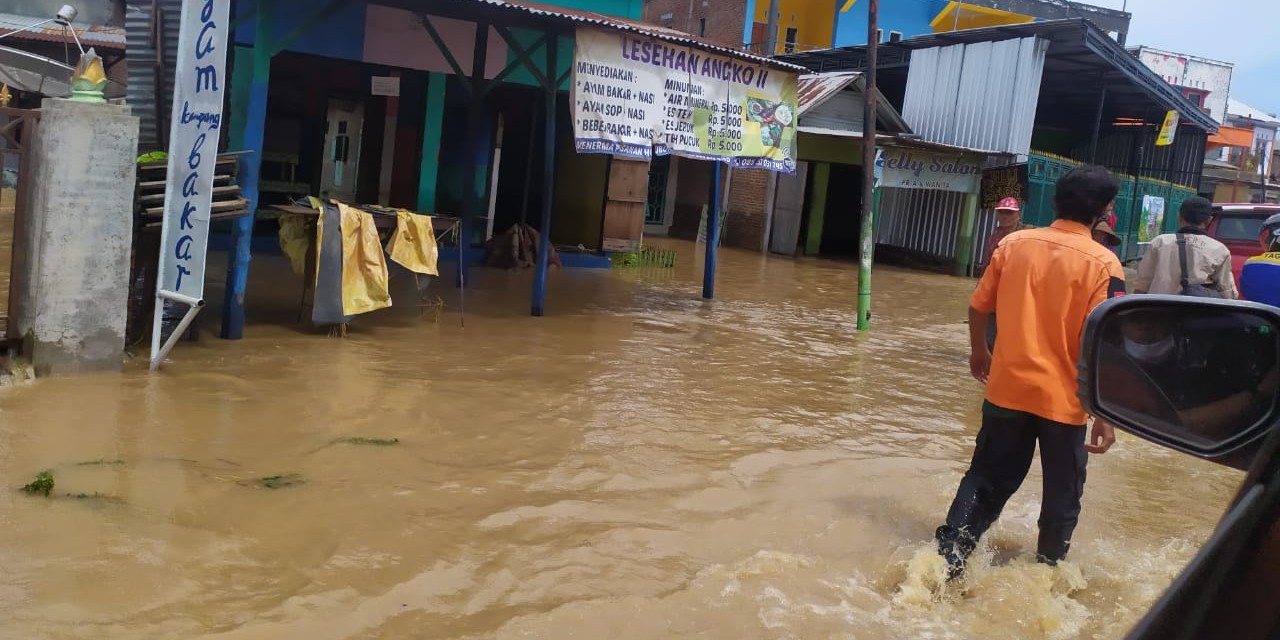
All-Women Team at Hackathon Fest 2021 Develops a Solution to Help Safeguard Vulnerable Communities from Future Flooding
Experience has taught us that preparedness, especially during disasters, is key. As we approach disaster mitigation and response through a digital focus, it is imperative to determine how these tools can help reduce the impact of disasters on vulnerable communities, help inform developers on better land-use management, and enhance the way first responders expand mitigation efforts.
The ongoing inaRISK Hackathon Fest 2021 addresses this issue by encouraging young Indonesians to develop innovative solutions for disaster risk reduction. One group of participants may have just found a solution.
Putting their heads together
A shared interest in digital systems and disaster risk mitigation brought Andini, Sachi, and Tia —students of Geography at the University of Indonesia — together. This academic interest and a shared friendship have morphed into a potential solution to expanding the inaRISK mobile application, developed by Indonesia’s National Agency for Disaster Management, BNPB, with UNDP’s support.
Armed with information following coursework in Geographic Information Systems (GIS) technology, the Alluvione team – whose name was inspired by the Italian word for flood - set about developing a system equipped with interactive spatial visualization. The system aims to help vulnerable communities from being impacted by future flooding.
Naming their project Nusantara Analysis Flood, or Nusaflood, the team notes they were inspired to develop a solution after seeing the devastation following the April 2021 floods in the province of East Nusa Tenggara (NTT). “As we know, there were considerable losses, both in terms of human life as well as the economy,” adding: “So we analyzed the situation in Kupang District in NTT using satellite imagery data.”
Potential for positive impact
The research helped the team create a system that can now help estimate the impact of floods on affected populations where users can identify so-called flood zones, which might, perhaps, help them choose areas to live or work in.
As part of their work on the Hackathon, the group noted that they analyzed demographic data, topography and land use. “Given the short time frame, we took advantage of technology like Google Earth Engine (GEE) to understand the area and identify a potential solution that could help this community, and possibly others, in the event of future disasters,” they said.
A 14-day flood impact analysis helps provide an overview of the area to help develop contingencies and other response mechanisms in the future. The system could also help responders help vulnerable communities during a disaster. “Our system can be used by everyone regardless of their technological literacy,” they added.
Recognizing the impact of climate change, this group of women hopes to further their interest in Geographic Information Systems and develop solutions based on past disasters: “I have always been interested in studying the impact of disasters on urban vs rural areas. GIS technology is being developed further and I hope to learn more. As we look for solutions to climate change, I hope this field can give us a few clues,” Andini said.
For this group of women, it is just the beginning. Sachi plans to continue working with GIS and hopes to become an expert in the field after she completes University. At the same time, Tia intends to focus on disasters impacting communities in Indonesia and finding solutions that can have a positive impact.
When asked for a message they would like to convey to other young women aspiring to work in digital technology, they noted, “As we know, programming is generally associated with men. We hope that we can inspire women, and especially young girls, to improve their coding, application development, and technological skills that are useful for providing information.”
“Now that we have entered the cloud computing era, we’re more aware that GIS can help people in various aspects. It is a useful skill to have,” Andini added.
If incorporated into inaRISK, the system could help widen the scope of disaster response mechanisms as stakeholders seek solutions to truly leave no one behind.